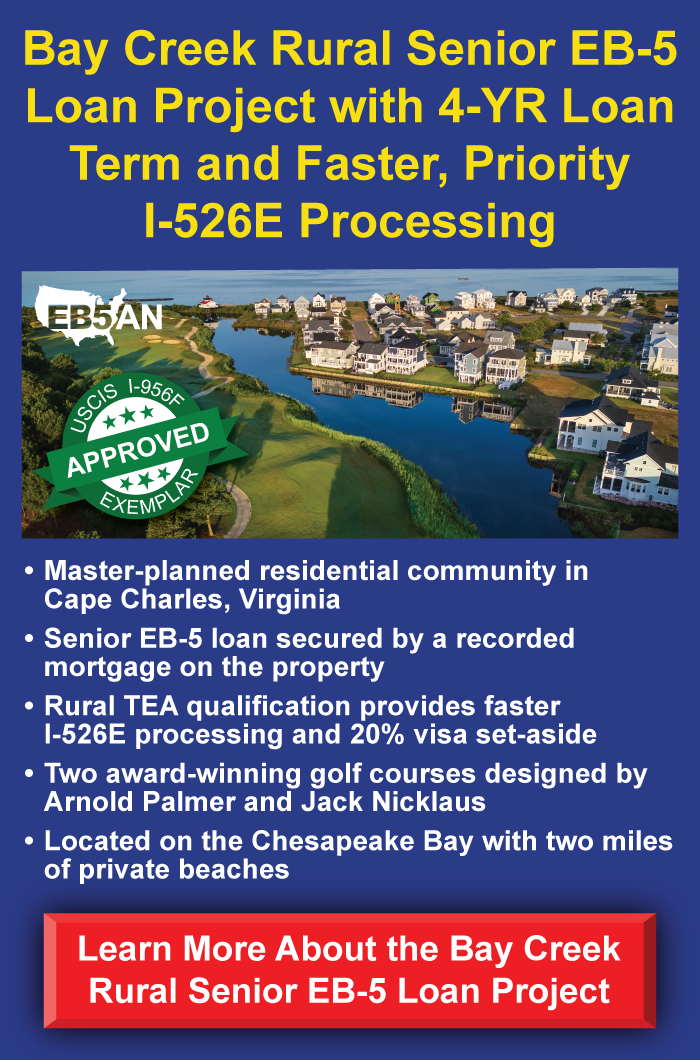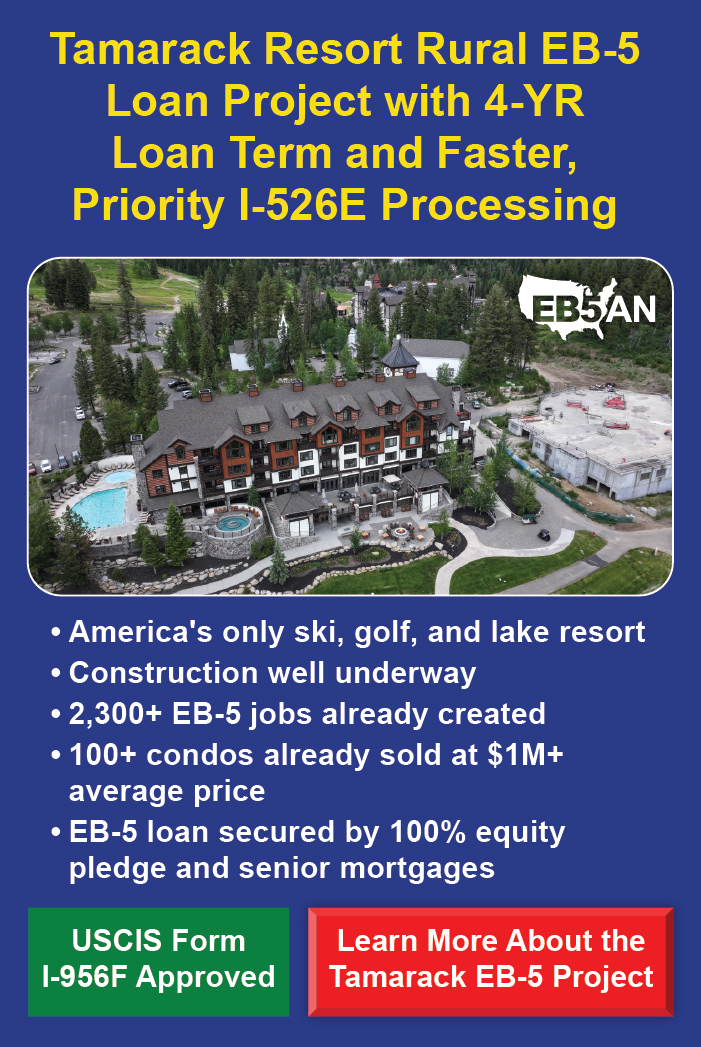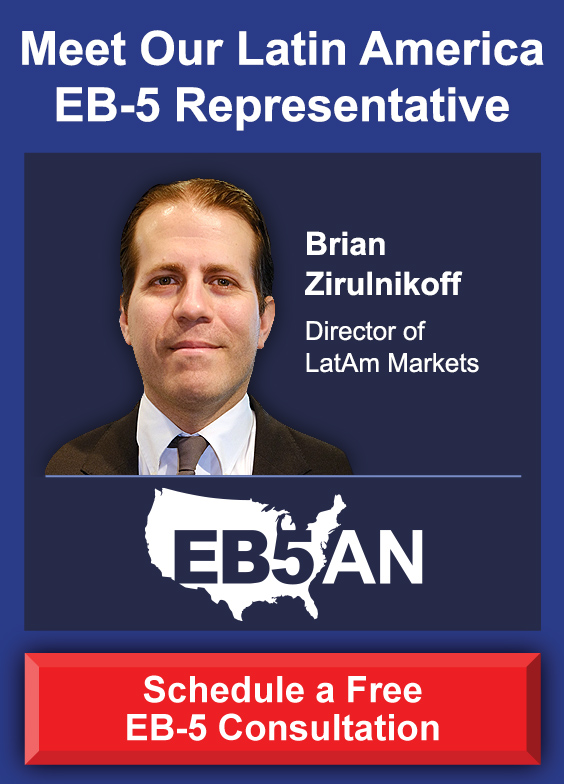
The EB5 visa program offers one of the quickest routes to obtaining permanent residency in the U.S. It enables investors who make a substantial investment in the U.S. economy to secure Green Cards for themselves and their direct family members, including spouses and unmarried children under the age of 21. Holding permanent residency (Green Card) allows investors and their families to live and work anywhere in the United States, enjoy unrestricted travel, and removes the requirement for an H-1B visa, an employment sponsor, or a visa sponsor.
In this article, we will look into the details of how the EB-5 program works, its requirements, and the two types of EB-5 investments along with their pros and cons.
EB-5 Visa Application Process
Comparing Direct EB-5 Investments and Regional Center Projects
Pros and Cons of Direct and Regional Center Investments
Choosing the Right Investment Path
Additional Guidance for EB-5 Investment Choices
EB-5 Visa Application Process

After investing in a new commercial enterprise (any for-profit business started or restructured after November 29, 1990), participants of the EB-5 visa program must submit either Form I-526E or Form I-526. Following approval from USCIS, EB5 investors outside the United States need to file Form DS-260. Those who are already within the U.S. must file Form I-485, Application to Register Permanent Residence or Adjust Status. Since March 2022, investors residing in the U.S. are no longer required to wait for the approval of their I-526E petition before filing Form I-485; they have the option to submit both applications simultaneously.
EB-5 Investment Requirements
- EB-5 investments must either establish a new commercial enterprise, invest in an existing commercial enterprise, or revive a struggling business, with the latter requiring significant changes to the business.
- EB5 investments need to generate a minimum of 10 employment opportunities for individuals authorized to work in the United States. These positions must be full-time, and should be maintained for at least two years. Although each job must be sustained for two years, it doesn’t have to be the same employee who occupies the role throughout this period. Employment of investors’ family members within the business does not count toward the job creation requirement.
- EB-5 investors must demonstrate the lawful acquisition of their investment capital, such as earnings or gifts, through detailed evidence including bank records and tax documents.
Comparing Direct EB-5 Investments and Regional Center Projects

EB-5 investments come in two forms: direct investments and investments within a new commercial enterprise that is sponsored by a regional center. Each investment type has its own set of requirements and procedures, with varying levels of risk and potential rewards. The suitability of either a regional center investment or a direct investment depends on the objectives of the investor. After committing to an EB-5 investment, an investor is unable to change from one investment type to the other, making it crucial for investors to thoroughly evaluate their options and make a well-informed decision prior to investing in a project.
Direct EB-5 Investments
With direct investments, EB-5 investors allocate their capital directly into a new commercial enterprise. This method is appealing to investors seeking greater involvement in the business’s decision-making and operational aspects. Direct investors are often expected to play an active role in the business.
Under the EB-5 Reform and Integrity Act of 2022 (RIA), a new commercial enterprise under a direct investment can be funded by only one investor, preventing the pooling of capital from multiple investors for a single project.
For direct investment ventures, the job creation requirement is strictly tied to full-time, W-2 employees of the enterprise, and investors are required to show evidence that their investment has led to the creation of 10 jobs, each lasting at least two years.
Regional Center Investments
Introduced in 1992 as a pilot program requiring regular reauthorization by the federal government, the regional center-sponsored investment model offers an alternative to direct EB-5 investments. In this model, investments are channeled into projects sponsored by regional centers. Foreign nationals can have less control over business operations compared to direct investments.
Pros and Cons of Direct and Regional Center Investments

Job Creation
One significant distinction between direct investments and regional center investments is that indirect jobs can be counted toward the job creation criteria with regional center investments.
This approach utilizes econometric analyses to calculate the broader economic effects of an investment. Within regional center projects, indirect and induced jobs can account for as much as 90% of the total jobs generated by the project.
This regulation simplifies the process for investors to demonstrate compliance with the job creation criteria of their EB-5 investment.
Pooled Funds
The privilege of pooling investments from multiple EB-5 investors is exclusive to regional center projects. This implies that developers wishing to combine funds to meet the financial requirements of a project must work with a regional center, which can accommodate multiple investors. This characteristic makes regional center investments appealing to individuals with limited resources or those interested in investing in projects that require more capital than a single investor can supply.
Moreover, many projects associated with regional centers are situated in Targeted Employment Areas (TEAs), allowing investors to commit a reduced investment of $800,000 instead of $1,050,000.
Ease of Application
Regional centers are entities designated by USCIS, assuring investors that their investments in regional center-managed projects are valid for the EB-5 visa program. Regional centers also typically have a group of EB-5 experts as part of their team, who can help EB5 investors through every step of the application process and beyond. This support ensures investors can navigate the EB-5 program requirements smoothly and prevent expensive errors.
While participants in regional center projects face less bureaucratic effort to demonstrate their investments’ compliance with the EB-5 program, they can also benefit from less responsibility regarding the day-to-day management of the business.
Financial and Immigration Risks
Given that regional centers already have USCIS approval, they generally represent more secure investment opportunities, potentially increasing investors’ chances of getting their visas approved and their funds repaid.
Choosing the Right Investment Path
For investors aiming for U.S. permanent residency, opting for a regional center-sponsored project might be the best choice, as these investments are generally considered safer. They usually require less hands-on management from investors, although both investment types necessitate some level of involvement. Regional center investments are also advantageous for those who prefer the flexibility to live away from the investment’s location. This flexibility is beneficial for investors with family members interested in working or studying in different parts of the United States, without being bound to a specific area.
On the other hand, direct investments cater to investors who prefer greater control over business operations and decision-making. This investment model can also potentially offer higher financial returns in the long run. However, direct investors must be aware of their obligation to create 10 direct full-time jobs and to invest the full investment capital alone, without the opportunity to co-invest with other foreign nationals.
Additional Guidance for EB-5 Investment Choices

The nature of each investor’s circumstances plays a significant role in which EB-5 investment option would be the best choice for them. This is why prospective investors should seek help from a reliable consulting firm before making these important decisions.
EB5AN has helped more than 2,300 families from 60 countries relocate to the United States as lawful permanent residents. Our expert team has more than a decade of experience, and offers clients first-rate, low-risk EB-5 regional center projects with 100% USCIS project approval rate to date.
If you would like to learn more about your investment options, book a call with our team today and get support throughout every step of your EB-5 process.











